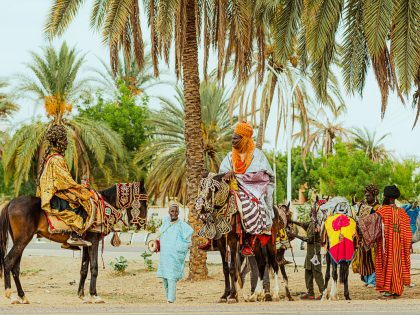What lessons on fascism can we learn from Africa’s colonial past?
In the 1930s fascism’s face was immediately recognizable in colonial Africa. It was neither a foreign concept nor an external threat in Africa.

German officers in colonial South West Africa, 1904. Image credit the German Federal Archives via Wikimedia Commons.
Mainstream discussion of fascism took a dramatic upturn in 2016. While the term became one of the most incriminatory labels of the 20th century, the reassertion of far-right ideologies and previously fringe political groups across the globe, has reanimated popular debate about about fascism. Narendra Modi’s Hindu nationalism and stifling of dissent has been met with considered critiques of fascism in India. In Holland, France, Italy and Germany far-right populism threatens to engulf Europe in a succession of 2017 elections that has mainstream media asking whether this is Europe’s new fascism? The success of Nigel Farage’s xenophobic arguments during Brexit and the circus show of Trump’s rallies brought debates about the nature of fascism firmly into mainstream media discussion.
In the face of populist vitriol against foreigners and enemies, threats and intimidation, demagoguery, and a repositioning (or removal) of the state, its laws and institutions, the repertoire of fascism is under critical debate again. Yet, while fascist behavior often appears loud, aggressive, and speaks in matter-of-fact terms, Jane Kaplan has recently reminded us that fascism is “not just the big bang of mass rallies and extreme violence; it is also the creeping fog that incrementally occupies power while obscuring its motives, its moves and its goals.” To confront fascism we need to “look more closely,” not simply by debating whether the past fits the present, but by applying “the history we already know” in order to look anew at our current circumstance. But what is the history we know?
And what, if anything, does African experience have to say about all this? A great deal, if we care to look. In the 1930s fascism’s face was immediately recognizable in colonial Africa. Historians are now engaging in a fruitful debate about the similarities and differences between fascism and colonialism, and whether one was a form of another. What is less recognized is that this debate was in no way peripheral to colonized people at the time. My own recent research in Ghanaian and Nigerian newspapers has found that editorials debated the nature of fascism on the same page as news reports of forced labor practices in Kenya; of segregation and “extermination” policies carried out by General Hertzog and his government in South Africa; of the use of militarized force to suppress labor in Northern Rhodesia and the power of one-man rule by colonial governors.
What does this tell us? First, that fascism was neither a foreign concept nor an external threat in Africa. In 1937 the Sierra Leone-born trade unionist, I.T.A. Wallace-Johnson, declared that Britain ruled in its colonial territories in a way that “turned the whole land into one large concentration camp.” That same year Jawaharlal Nehru asserted that the British Raj in India “wears a fascist uniform.” When rumors swirled that Hitler might be appeased by returning former German territory in Africa, the Nigerian editor J.V. Clinton argued that to be handed back to Germany “would be no greater treachery… than to place us cheek to jowl with European Colonists.” For Clinton, fascism involved the suppression of freedom of speech and racialized violence against workers, but it also had something to do with land, territory and annexation, and settler colonialism.
The second point that African perspectives on fascism tells us is that, because of the close comparisons between colonial rule and fascism, Africans and other colonized peoples around the world understood the character of fascism in a relational mode. This is vital insight for an ideology that continues to defy clear categorization and definition. My main point is simple: if we are witnessing ideas and behaviors that look a lot like fascism but in a contemporary context and in newer geographies (like the United States and India), then we need to expand our historical perspective beyond continental Europe.
The most famous articulation of the relation between colonialism and fascism is certainly Aimé Césaire’s declaration that fascism was “colonialist procedures … applied to Europe”. With this formulation, fascism’s character struck a different chord. We know that this was not the first articulation of this idea, but rather one voice among many. Césaire’s avowal in 1950 meant that the Allied powers could not walk away from fascism so easily. Nor can any of us, wherever we live, now. His declaration demanded that fascism be examined again, with a wider lens and a broader canvas. It cautioned that every time we think we have diagnosed the culprit, we should look again.



















